If you are a garden lover or love to be surrounded by greenery, then adding a terrarium in your house can be a good way to bring a little greenery to your house. It is great for people living in small spaces.
Terraria are just a modified term for the little indoor garden in a glass jar. They are micro-ecosystems generally in bowls, glass vases, jars, or tanks and can vary in size. Terrariums are low maintenance, space-saving, and simply beautiful, making a great addition to any home or workplace.
However, it can be a real task to choose terrarium plants like so many options are available. Here we have provided terrarium ideas that you can utilize to create your terrarium garden.
How Do Terrariums Work?
Terrariums are like mini-greenhouses. The containers are generally transparent, typically made of glass or plastic. Terrariums are indoor gardens and can be sealed or open. The sealed ones have a lid on them, while open ones do not.
The soil and plants in the terrarium release water vapor, which gets collected on the walls of the container, eventually trickling down to the soil. So basically, the water gets recycled. Due to their self-sustaining and self-nourishing nature, they require little maintenance.
What Are the Types of Plants That Work Best for Terrariums?
Foliage plants or plants that grow slowly work best for terrariums. Following are some examples of such plants.
Dwarf Palms
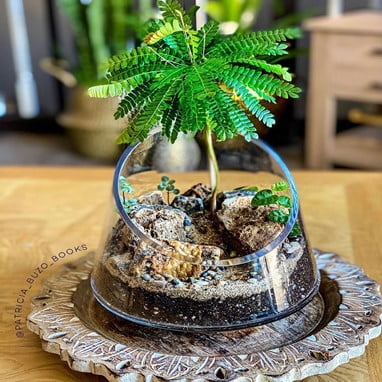
Nothing is as tropical as a palm tree, but can we fit one of those in a terrarium? Well, maybe…
Biophytum sensitivum
also known as the “Little Tree Plant,” is native to wetland areas of India and Nepal is a palm-like plant and a true tropical beauty.
It has delicate branches of leaves that radiate outward from the central crown and gently fold up when touched or at night.
Airplants

Tillandasia, commonly referred to as air plants, are popular terrariums plants. They are epiphytes, meaning they live on other plants in a non-parasitic manner.
Due to their strange, mysterious nature, creating beautiful air plants displays is so effortless that anyone can create it.
Peperomia
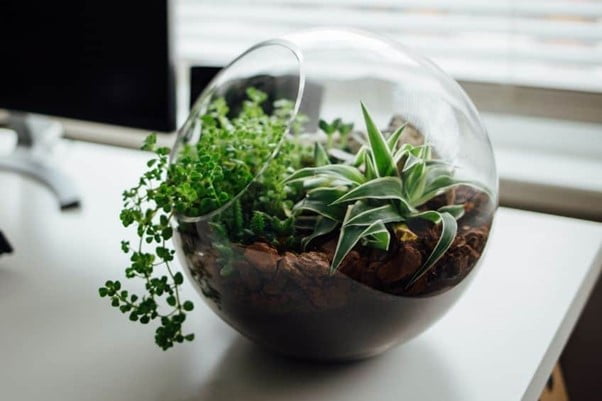
Peperomia are again popular terrarium plants commonly kept in combination with ferns and other high humidity-loving plants.
They are low maintenance house plants, requiring little more than bright light and regular watering. Their flowers are generally tiny and clustered on a spike or spire.
Ferns

Maidenhair fern are beautiful plants but are quite picky in their growing conditions. Apart from being a popular houseplant, they are also found in nature. They are considered as slow-growing fern, typically taking up to 3 years to reach their full mature size.
They are delicate plants with tiny fronds and a lace-like appearance. The most important factor while considering its growth is humidity. It thrives on moisture and requires a lot of it to survive. If provided with proper growing conditions, Maidenhair can be an interesting and beautiful addition to any indoor plant collection.
Succulents
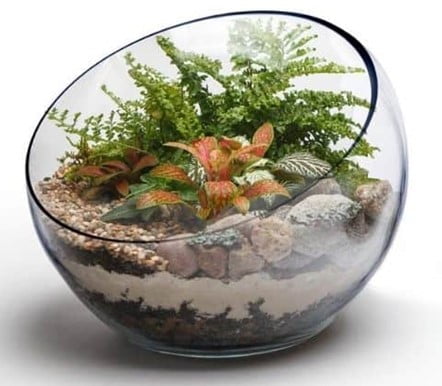
Cacti and other succulents are not very successful in growing in humid climates, but they can be grown favorably in terrariums. Use an open terrarium to grow these. This is to keep the humidity much lower than it is in a closed container.
Make sure you create a healthy water cycle in the terrarium involving retaining an adequate level of moisture in the substrate or foundation. This will help maintain airflow around the plant and lower the amount of humidity the container can generate.
Carnivorous Plants

Carnivorous plants like Pitcher Plant, Venus Fly Trap, etc., must be rooted in a layer of sphagnum peat moss. The sand helps keep the roots moist, and the moss peat looks nice, keeping the sand from drying between watering.
For watering, since the pitcher plants are intolerant to impurities, you should avoid using tap water. Instead, you can collect some rainwater or use bottled drinking water. Also, pitchers like high humidity. So, if you live in a dry climate or have them in the sun, you should mist the plants often.
How to Make Terrarium?
- To start, either get a terrarium case to hold your garden or better if you create a buy one with a soda bottle, fish tank, fish case, or vase.
- Fill half of it with soil (you can add pebbles initially to make it look better)
- Add any extra rocks or big pebbles.
- In the soil, make a hole big enough for the roots to fit in
- Loosen up the soil and position the plant, then add a second layer of soil.
- Get creative and mix up plants, colors, and sizes.
Conclusion
Terrariums are a beautiful addition to home and workplace décor and a great option for gifts. It is easy to maintain and can last for a long without needing to be replaced.
In general, most terrarium plants are tropical in nature. And this goes together with the high humidity, warmth, and moisture of a closed terrarium environment.
So, apart from the ones discussed in the list above, there are many more options out there to be explored. All you must do is pick the one you want and start with your terrarium gardening.
Happy Planting!!




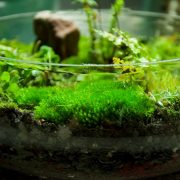

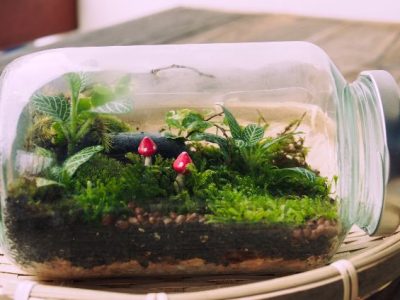

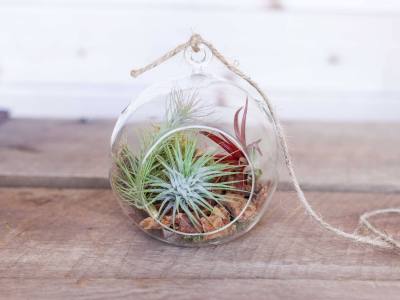
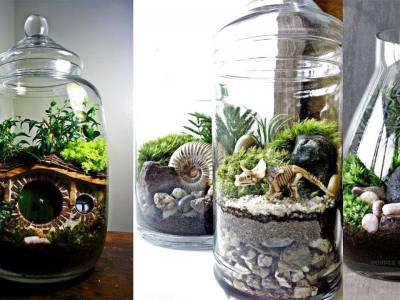
Comments